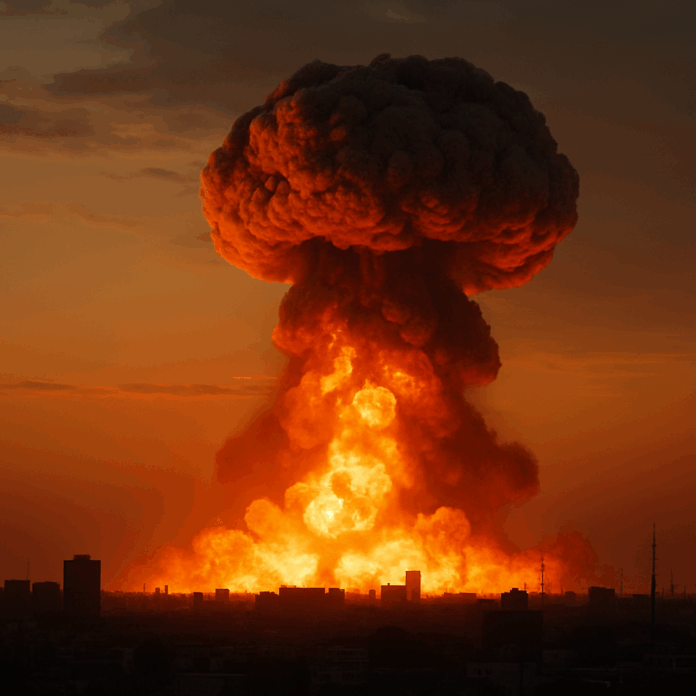Nuclear tensions flared dramatically this weekend, redrawing the geopolitical map in just a few hours. In a rapid and highly controversial operation, the United States launched airstrikes on three nuclear facilities in Iran : Fordow, Natanz, and Isfahan, citing clandestine acceleration of Tehran’s weapons program. Former President Donald Trump hailed it as a “complete success,” though the decision to bypass Congress drew sharp domestic criticism.
Nuclear tensions escalate: Iran, Israel, and the risk of regional war
Iran’s retaliation was swift. Twenty-seven missiles targeted Israel overnight, mainly around Tel Aviv. While most were intercepted by the Iron Dome defense system, several explosions were reported, including near Ben Gurion Airport. Israel responded immediately, launching targeted strikes on Iranian military assets in Syria and western Iran. With Tehran threatening a “proportional but lasting” response, the specter of open regional war is looming. The strategic Strait of Hormuz, through which nearly 20% of global oil flows, may soon be closed, sending shivers through world markets.
Western diplomacy falters under the weight of crisis
Western leaders scrambled to react. Emmanuel Macron, Olaf Scholz, and Rishi Sunak called for restraint, warning of an “uncontrollable escalation.” The UN Secretary-General issued a statement of “grave concern” and urged renewed dialogue, an appeal that feels almost symbolic in today’s volatile landscape. The region is already battered by war in Gaza, growing tensions in Lebanon, and the rise of Iranian-backed Shiite militias.
Domestic chaos in France: syringe attacks and a wedding turned violent
Meanwhile, France grappled with chaos of its own. The June 21st Fête de la Musique was overshadowed by a disturbing wave of “wild syringe” attacks: at least 145 people, mostly teenage girls, were reportedly injected with unknown substances in major cities. Twelve suspects were arrested. Hours later, a wedding in Vaucluse turned deadly when gunmen opened fire, killing the bride and injuring several others. Two of the attackers were killed; three remain at large.
Heatwave pressures Europe as infrastructure strains
As if geopolitical and domestic unrest weren’t enough, Europe is enduring its first extreme heatwave of the summer. London, Paris, and Milan neared 40 °C, forcing emergency measures. In the UK, health officials warned of blackouts and hospital strain. In France, energy giant EDF announced reduced output at several nuclear plants due to rising river temperatures, another reminder that climate extremes are compounding global fragility.
NATO summit and G7: military ambitions meet European division
All eyes now turn to The Hague, where NATO leaders are gathering on June 24–25. Newly appointed Secretary-General Mark Rutte is pushing to formalize a defense spending target of 5% of GDP. The proposal divides the alliance: the U.S., Poland, and Baltic states see it as essential, while Spain and others call for flexibility to preserve their social models. Behind the numbers lies a deeper shift, America is reasserting leadership in a multipolar world where diplomacy seems increasingly obsolete.
Just days earlier, the G7 met in Canada to project unity. But in the face of airstrikes, missile launches, and social unrest, their carefully crafted statements already feel outdated. The world is entering a zone of acute turbulence: institutions are buckling, alliances are strained, and civilians are paying the price.
The question remains: are we witnessing the dawn of a new world order, or the collapse of the one we thought we knew?



